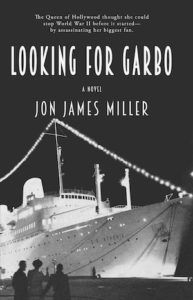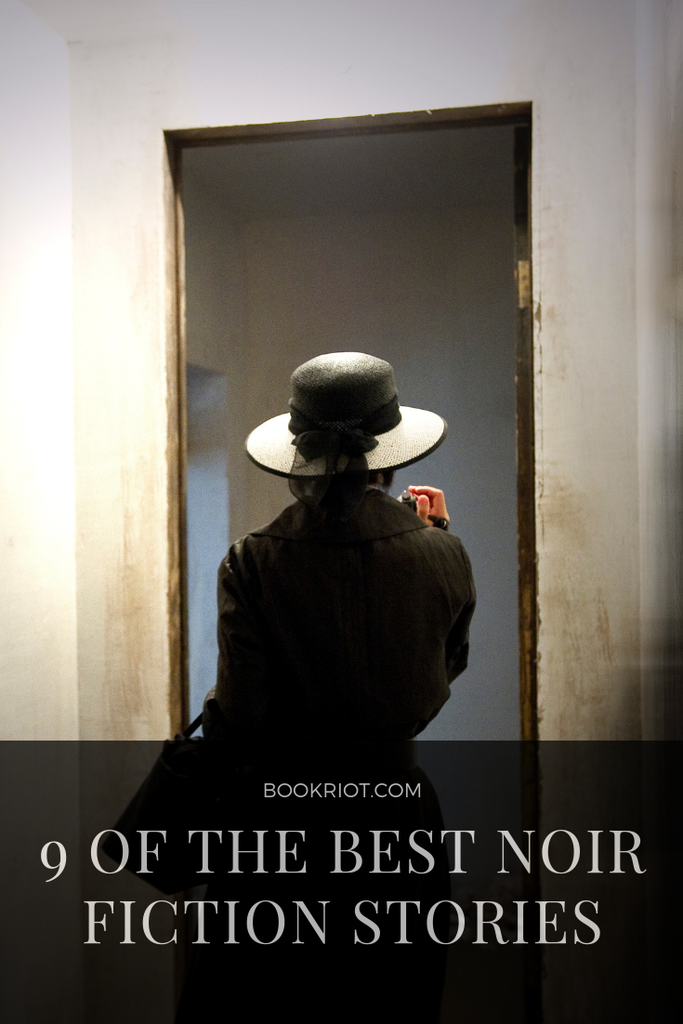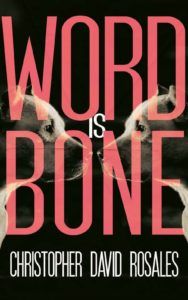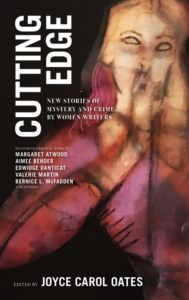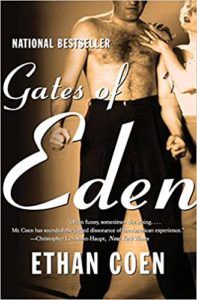In Looking For Garbo, tabloid NYC reporter Seth Moseley gets a hot tip that movie goddess Greta Garbo is stowed aboard an ocean liner bound for Europe on September 1, 1939. He boards the vessel, desperate to get a candid photo and pay off some hefty gambling debts. But he gets more than he bargained for when Seth realizes the reclusive Garbo is actually sailing on to Nazi Germany, on a secret mission to stop WWII before it can start by assassinating her biggest fan – Adolf Hitler. Miller’s debut novel is filled with action, thrills and golden age Hollywood glamour. Many of us equate noir fiction with crime, but there’s way more to the genre than just the illegal facet. Joyce Carole Oates says it best: “It has been noted that noir isn’t a specific subject matter but rather a sort of (dark) music: a sensibility, a tone, an atmosphere…Not so much pessimistic as starkly realist, free of romantic illusion, expecting less benign, resigned to the worst. Noir is a populist sort of tragic vision, making of a man’s infatuation with a woman, in traditional noir, something richly ironic and often lethal—not profound, as in classic tragedy, but a confirmation of the way the (actual) world is: deceptive, punishing. Noir is frequently, though not inevitably, romantic/sexual disillusion, fury.” To synthesize: all noir deals with crime, but not all crime is noir. It’s a squares-and-rectangles situation.
This list is full of reimaginings of the above definition or mood: it’s a short list of fiction noir retellings, meaning they are certainly noir, but some aspect of them has been modified so that they don’t ascribe totally to the genre as formula. And although the crime doesn’t make them noir, well…crime is a key ingredient.
Word is Bone by Christopher David Rosales
The novel Word is Bone by Christopher David Rosales portrays the hardboiled neighborhood of Clearwater, California. Here, everyone is involved in crime out of necessity—whether it comes from a loyal daughter sabotaging her mother’s competing sex worker upstairs, the welterweight pimp who defends his neighborhood, or the elderly woman who slanders a potential gangbanger because she thinks he’s trying to seduce a young girl, and she’s been listening to too many crime shows. You’ll love this book if you’re ready to hear the “tragic vision” from a new perspective. (Spanky forever. You’ll get this inside joke later.)
Cutting Edge: New Stories of Mystery and Crime by Women Writers edited by Joyce Carol Oates
Joyce Carol Oates says in her introduction to the anthology, Cutting Edge: New Stories of Mystery and Crime by Women Writers:”In noir, women’s place until fairly recently has been limited to two: muse, sexual object.” Over my cold, dead body, I say, as I throw up the collar of my trench coat and disappear forever into the rainy night. This collection enlivens those flattened archetypes by retelling the noir narrative from the new perspectives of teenage girls, women hired hands, and mothers of children. Here are some notable noir fiction retellings in that text:
“One of These Nights” by Livia Llewellyn
This short story is a noir fiction retelling from the perspectives of two teenage girls, the enforcers to exact their revenge on another girl for sleeping with one of the pair’s father. I love the inversion of the trope that the girls need to be rescued from the men: in this case, the girls both need to be rescued from each other and by each other. (Ain’t that the fuckin’ truth, though?)
“Please Translate” by Edwidge Danticat
This noir fiction retelling happens in rare form: a series of voicemails is translated from Haitian Creole into English for the sake of crime investigation. The messages are left by the mother of a child on the voicemail of the child’s father, her former partner. The voice is novel, as is the medium, and our protagonist is in no way limited to the role of “muse, sexual object.” She is so, so, so, so, so much more than that.
“Miss Martin” by Sheila Kohler
Don’t you just love it when bitches conspire against a tyrannical dude? It is legit my favorite thing to watch—forget a Bechdel test: I want these girls to MAKE THE PATRIARCHY WORK FOR THEM. Diane and her stepmother, Miss Martin (who was her father’s secretary before she married him) exact revenge in the subtlest, most satisfying method.
Zero Saints by Gabino Iglesias
In this book of what the author calls “barrio noir,” Fernando, our enforcer/antihero, gets jumped on the way home from work, and he’s made to watch his friend be tortured and executed. With the help of a Santeria Priestess, he goes about reclaiming his territory and facing a much more serious (yeah, even more serious) foe. This book is definitely noir fiction, but it’s super fresh to me—I’ve never read anything like it. It’s dope.
“A Good Man is Hard to Find” by Flannery O’Connor
To reiterate Joyce Carol Oates’s emphasis on perspective, although “A Good Man is Hard to Find” is often categorized as Southern Gothic, the mood of being “resigned to the worst” is absolutely present in this unforgettable short story. I consider it a retelling because it’s told from the perspective of a casually racist matriarch who, in the words of our antagonist, “would of been a good woman if it had been somebody there to shoot her every minute of her life.”
No Country for Old Men by Cormac McCarthy
Rebrand it as a “western” or “thriller” or “horror” all you want, but when your seasoned policeman starts the book by recounting how he sent a teenage killer to the gas chamber, and then, after talking to him, realizes he had no soul…that’s a “tragic vision” if I ever heard one. No Country for Old Men by Cormac McCarthy is surely a classic good guys versus bad guys story, but because it’s Texas, you get a Good Ol’ Boy as your protagonist, and the bad guy isn’t just bad, he’s the “prophet of destruction,” “the ultimate bad ass,” “the dismal tide.”
Gates of Eden by Ethan Coen
You know this name, undoubtedly, because he’s one half of the Coen Brothers who directed the film adaptation of No Country for Old Men, as well as some of our other cinema treasures like True Grit, Fargo, and The Big Lebowski–all of which have that noirish bent. Want to hear the logic behind the fugitive’s beheading of his wife? How could you NOT? These are my short list of crime noir retellings, but it is by NO means extensive—what are your favorites? We—and by “we” I mean “I”—are always looking to stack that TBR pile high high high with narratives that are…how did Oates put it? “Something richly ironic and often lethal”? Yes. That. More of that, please and thank you.
